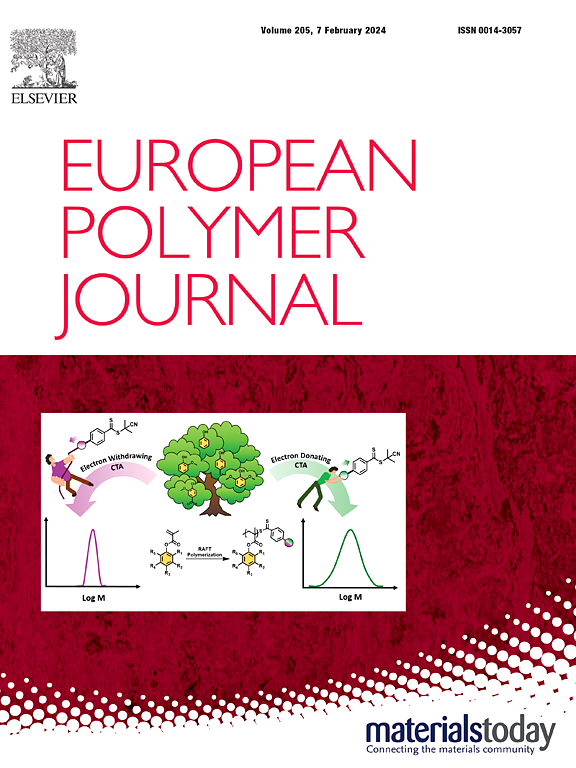Influence of alkyl chain lengths and positions on visible-light absorbing triphenylamine oxime esters for free radical photopolymerization
IF 5.8
2区 化学
Q1 POLYMER SCIENCE
引用次数: 0
Abstract
To investigate the effect of alkyl chain lengths on photoreactivity, various triphenylamine-based oxime esters (WH-1–5) with different alkyl chain lengths at the R2 and R3 positions, which have not been reported before, were synthesized in this study. That is, an alkane segment in WH-1 at R2 is methyl and R3 is methyl, WH-2 at R2/R3 are butyl/methyl, WH-3 at R2/R3 are undecane/methyl, WH-4 at R2/R3 are pentadecane/methyl, WH-5 at R2/R3 are methyl/butyl. In addition, the reference compound TP-1M, with hydrogen and methyl at the R2 and R3 positions, was also prepared for comparison. Compared to the reference compound TP-1M, all the alkyl chain-based compounds exhibited better dispersity in the testing monomer, trimethylolpropane triacrylate (TMPTA). Additionally, the maximum absorption wavelengths of these oxime esters range from 336 to 354 nm, exhibiting a slightly bule-shifted absorption compared to the reference compound TP-1M. Furthermore, the photochemical reactions were studied in detail through steady-state photolysis, electron spin resonance (ESR), and cyclic voltammetry (CV). Finally, the photoreactivity of the photoinitiation systems was studied by photo-DSC instrument under various exposure wavelengths (UV lamp, LED@365 nm and LED@405 nm). Among all, WH-5 based formulation exhibits the best double bond conversion efficiency whether upon UV lamp (43 %) or LED@405 nm (46 %). WH-5 based formulation also showed good final double conversion under LED@405 nm within relative lower light intensity. This study thoroughly examined and discussed the effect of positions, length, and dispersity of alkyl chains in triphenylamine oxime esters.

求助全文
约1分钟内获得全文
求助全文
来源期刊

European Polymer Journal
化学-高分子科学
CiteScore
9.90
自引率
10.00%
发文量
691
审稿时长
23 days
期刊介绍:
European Polymer Journal is dedicated to publishing work on fundamental and applied polymer chemistry and macromolecular materials. The journal covers all aspects of polymer synthesis, including polymerization mechanisms and chemical functional transformations, with a focus on novel polymers and the relationships between molecular structure and polymer properties. In addition, we welcome submissions on bio-based or renewable polymers, stimuli-responsive systems and polymer bio-hybrids. European Polymer Journal also publishes research on the biomedical application of polymers, including drug delivery and regenerative medicine. The main scope is covered but not limited to the following core research areas:
Polymer synthesis and functionalization
• Novel synthetic routes for polymerization, functional modification, controlled/living polymerization and precision polymers.
Stimuli-responsive polymers
• Including shape memory and self-healing polymers.
Supramolecular polymers and self-assembly
• Molecular recognition and higher order polymer structures.
Renewable and sustainable polymers
• Bio-based, biodegradable and anti-microbial polymers and polymeric bio-nanocomposites.
Polymers at interfaces and surfaces
• Chemistry and engineering of surfaces with biological relevance, including patterning, antifouling polymers and polymers for membrane applications.
Biomedical applications and nanomedicine
• Polymers for regenerative medicine, drug delivery molecular release and gene therapy
The scope of European Polymer Journal no longer includes Polymer Physics.
 求助内容:
求助内容: 应助结果提醒方式:
应助结果提醒方式:


